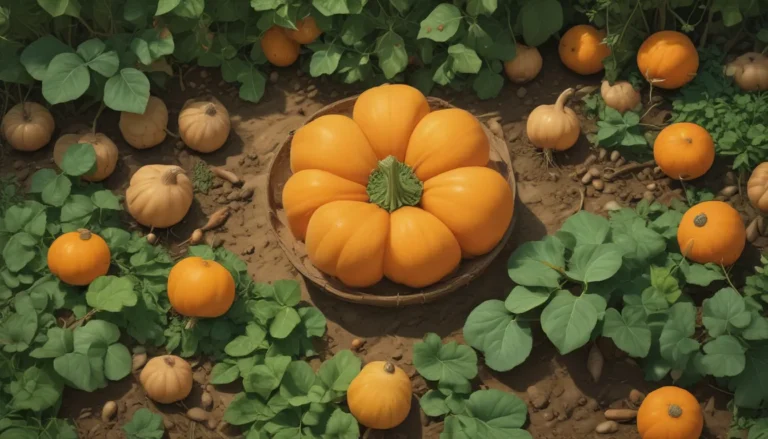How to Achieve the Perfect Soil pH for Growing Blueberries

Have you ever dreamed of enjoying freshly picked blueberries right from your garden? Picture the warmth of the sun on your skin as you bite into a plump, juicy berry. Sounds amazing, doesn’t it?
Unfortunately, achieving that dream can be quite challenging if your soil pH is not right for growing blueberries. But fear not, there are ways to adjust your soil to create the perfect environment for these delicious fruits.
In this comprehensive guide, we will explore everything you need to know to lower your soil pH and successfully grow blueberries:
Why Blueberries Need Acidic Soil
Blueberries have evolved to thrive in acidic soil with a pH between 4.0 and 5.3. This acidic environment is essential for the plants to absorb nutrients like iron, phosphorus, zinc, and aluminum effectively.
In alkaline soil, blueberry plants struggle to access these vital nutrients, leading to issues like yellowing leaves and poor growth. Adjusting the soil pH to make it more acidic creates an ideal growing environment for blueberries.
Selecting the Right Product for Lowering Soil pH
When it comes to lowering soil pH, elemental sulfur is the most effective and affordable option for home gardeners. It works by converting to sulfate in the soil, gradually reducing the pH over time.
Avoid using coffee grounds or peat moss as these methods are less effective and do not provide long-lasting results. For best results, consider using a product like Soil Mender elemental sulfur, available for purchase online.
Testing the Soil Before Planting
Before you start planting blueberries, it’s crucial to test your soil’s pH to determine if any adjustments are needed. Different areas of your garden may have varying pH levels, so it’s essential to test multiple spots.
Additionally, consider the texture of your soil, as sandy soil requires more frequent amending compared to clay soil. A soil test will provide you with accurate information to guide your pH adjustment process.
When to Apply Sulfur for pH Adjustment
To achieve the desired soil pH for blueberries, begin applying elemental sulfur at least six months to a year before planting. The timing depends on your current soil pH, with higher pH levels requiring more time for adjustment.
Ideally, spread out the sulfur applications over a longer period to allow for more stable pH levels. Avoid adjusting the pH after planting, as it can cause stress to the plants and disrupt their growth.
Tips for Applying Elemental Sulfur
For sandy or clay soil, incorporate well-rotted compost along with the elemental sulfur to improve drainage and nutrient retention. Work the sulfur into the soil to a depth of eight inches and water thoroughly to initiate the pH adjustment process.
Keep in mind that it may take several treatments to achieve the desired pH reduction, so monitor the soil regularly and reapply sulfur as needed. Avoid using aluminum sulfate due to its negative environmental impact.
Maintaining the Soil pH for Blueberries
Once you have successfully adjusted the soil pH for your blueberry plants, it’s essential to maintain it over time. Use a fertilizer designed for acidic soils, like Down to Earth Acid Mix, to prevent the pH from creeping back up.
Regular fertilization and monitoring of the soil pH will help ensure that your blueberries continue to thrive and produce abundant fruit. By following these maintenance practices, you can enjoy a bountiful blueberry harvest year after year.
Conclusion
Growing blueberries in your garden can be a rewarding experience, but it requires careful attention to soil pH to ensure optimal plant health and productivity. By understanding the importance of acidic soil for blueberries and following the steps outlined in this guide, you can create an ideal growing environment for these delicious fruits.
Don’t let soil pH limitations hold you back from enjoying fresh blueberries picked straight from your backyard. With the right knowledge and techniques, you can cultivate a vibrant blueberry patch that will delight your taste buds for years to come.
Remember, a little extra effort in adjusting the soil pH is well worth the joy of indulging in freshly harvested blueberries. So, roll up your sleeves, grab your gardening tools, and get ready to transform your garden into a blueberry paradise!
What are you waiting for? Start planning your blueberry garden today and embark on a delicious journey of homegrown fruit goodness!
For more information on growing blueberries, check out our additional guides on growing blueberries in containers, transplanting blueberry bushes, and harvesting perfectly ripe blueberries.
Get ready to bring on the blueberries and elevate your gardening game to new heights!





